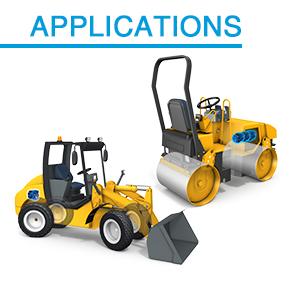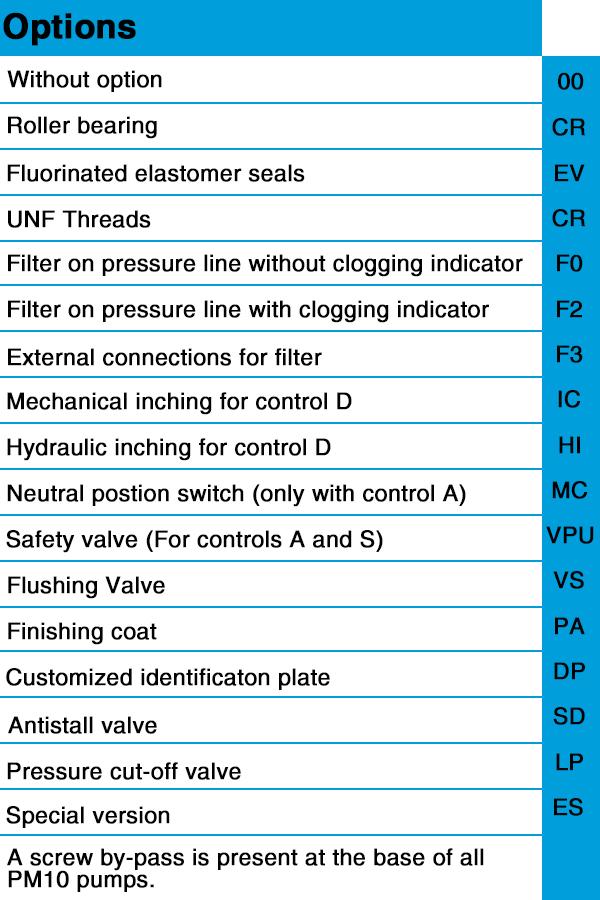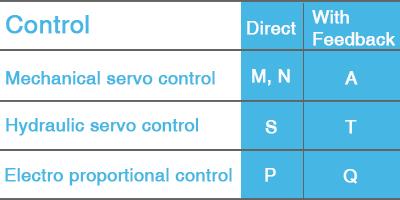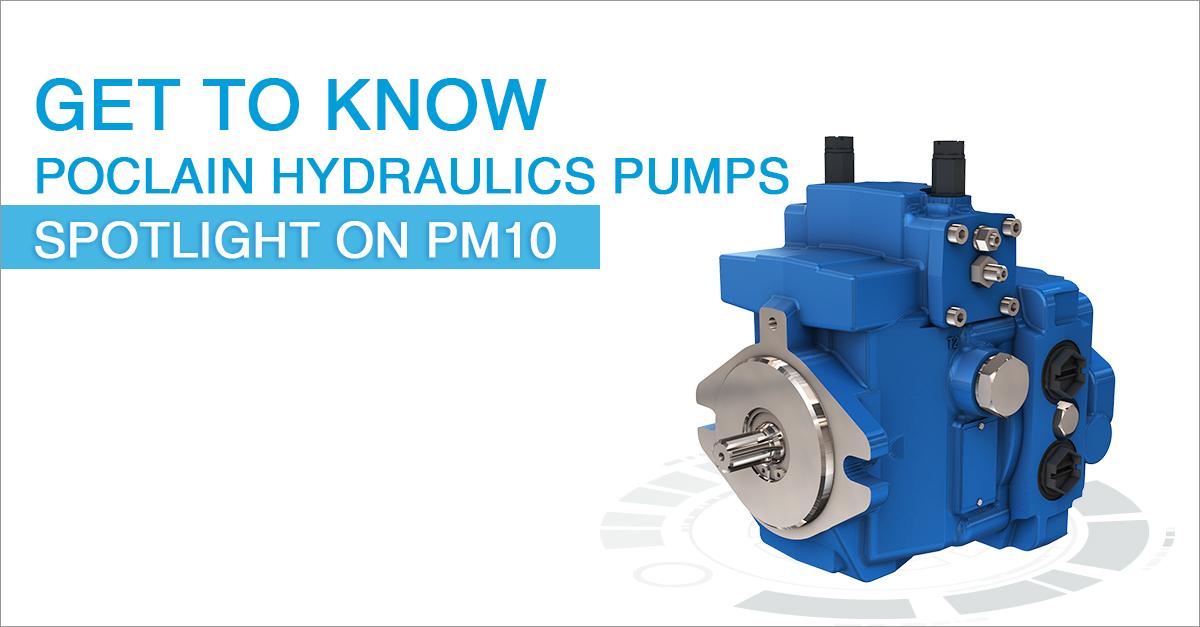GET TO KNOW POCLAIN HYDRAULICS PUMPS: SPOTLIGHT ON PM10
One word: Versatility.
The PM10 addresses a number of different issues for OEMs, but in the end, it filters down to solving logistical problems and making design easier. It fits the bill for a wide range of applications from ag to construction.
A wide range of applications
Options for various different controls—that include a flushing valve, pressure cut-off, roller bearing, fluorinated elastomer seals, and speed sensors – give designers a number of criteria to work with to fit their applications with fewer components to manage from a logistical standpoint.
The PM10 fits applications with max absolute pressures between 300 and 350 bar. When pressure is lower, other options such as the PMV0 make more sense. Some examples of applications for the PM10 pump are:
- Mini tracked loaders
- 1-2 ton compactors, and walk behind compactors
- Wheel loaders
- Industrial sweepers
- Remote controlled mowers
- Combine front reel drive

What are some of the different PM10 options and why use them?
The compact PM10 design makes it a good choice for machines with space constraints. Its low-noise output is a plus for end-user comfort and it has numerous options for both single and tandem versions.
- Input flange: both SAE A or SAE B
- Displacements: From 7 to 18 cc/rev at 350 bar and 21 cc/rev at 300 bar
- Bypass valve: moves the vehicle very short distances at slow speeds
- Reinforced bearing: support when the maximum allowable radial load on the shaft is reached, for example with a belt drive
- Filter option: used to protect against oil contamination, or to monitor contamination
- Inching lever: reduces the pilot pressure independently from engine speed
- VPU safety valve: actuated if the operator is in the seat, it is used for compaction or mini-loader applications, and avoids starting the engine if the control lever is not in neutral position for the PM10.

Mechanical, Electrical, or hydraulic controls – how to choose?
The controls address the tilting actuation of the swash plate. The type of controls chosen depend on the machine’s architecture.
- Mechanical Control: from a cost optimized solution standpoint with smaller machines, mechanical controls are the first option. Direct mechanical control, “M” directly connects to the swashplate to change displacement; next a version with return spring “N” gives an automatic return back to neutral position with a spring. The PM10, as well as all bigger PM pump models, have a mechanical control with feedback, called “A”. Feedback maintains the position of swashplate constant giving the pump more stability. It works perfectly for our automatic control applications and allows for smooth reverse as requested in compactor applications.
As we go up in machine size or complexity, electrical or hydraulic control is generally a better choice.
- Hydraulic Control: as the machine size and displacement increases, it is harder to use mechanical control. The force needed to actuate the swashplate increases and the lever option is not practical – you would need either a very long arm or a huge amount of force.
- “S” proportional hydraulic servo control works where the position of the swashplate is proportional to a pressure input signal usually through a joystick in the cab. The power-limiting characteristic reduces power requirements and allows for smooth operation. It also integrates well with hydraulic architecture. PM10 can be also available with a proportional hydraulic servo control with feedback, called “T”.
- Electrical Proportional Control: It is easier and more affordable to add diagnostic or electrical functions than ever before. Electrical control is manageable directly from the dashboard with our P direct electrical proportional control or Q electrical proportional control with feedback. With this type of control, the swashplate is proportional to an electrical input signal. Q control with feedback matches the feedback function for electro-proportional where the swashplate is proportional to a voltage input signal.

- With B and C electrical control if the voltage is lost, the control returns to zero. If you need an electrical on-off servo control on-off solution, PM10 B & C control meets that request perfectly.
- Automotive Control: This type of control delivers reduced fuel consumption and noise pollution. With automotive D control, the swash plate position is relative to the pump rotation speed. It offers easy command for easy driving and anti-stall for agriculture or construction machines, where the driver pushes or releases the pedal like in a car. Our D control concept is the same from 7cc to 70 cc, Poclain is the only one in the market to propose it below 18 cc/rev.
Where to go to learn more about the full range of Poclain Pumps?
https://www.poclain-hydraulics.com/en/products/pumps
Up next… PMV0
Written by Filippo Ganzerli, Axial Product Marketing Manager


